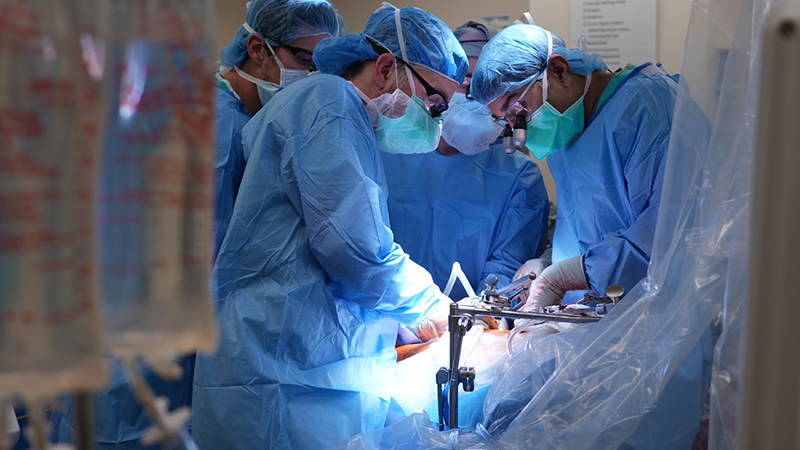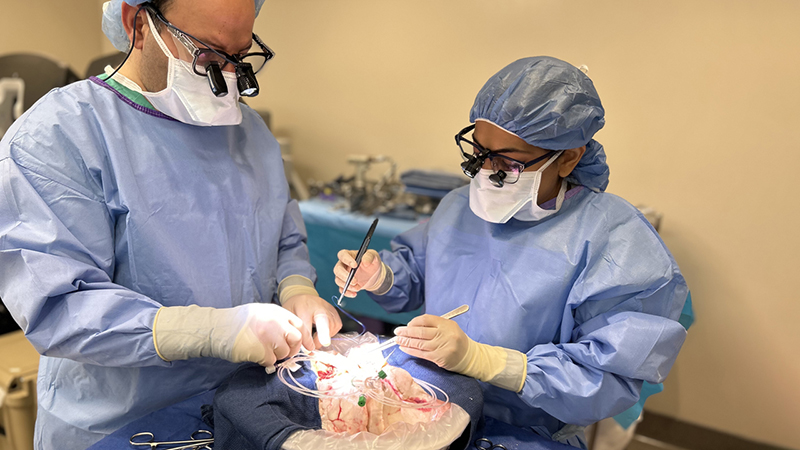‘Lungs in a Box’ Makes More Lungs Available for Transplant
New Device Helps Surgeons Examine Donor Lungs Outside the Body Before Transplantation
Published February 2023
Due to COVID-19 and a rapidly expanding list of conditions for which lung transplantation can be lifesaving, such as lung cancer, the need for donor lungs is growing. However, out of all solid organs, lungs are typically used the least, with only 28% of donor lungs meeting the crieteria to be transplanted.
To help expand the donor pool, Northwestern Medicine is now using a device called XPS™, which is used for ex vivo lung perfusion (EVLP). Nicknamed "lungs in a box," the device can help improve the health of donor lungs, outside the body, to make them viable for transplant.
"EVLP allows us to take donor lungs outside the body, attach them to a ventilator and make them clinically usable by treating infection, inflammation and swelling — it's visually stunning," says Ankit Bharat, MD, chief of Thoracic Surgery at Northwestern Medicine and executive director of Northwestern Medicine Canning Thoracic Institute, who pioneered COVID-19 lung transplants in the United States. "Because we were the first health system in the U.S. to offer lung transplants for COVID-19 patients, our patient volume continues to increase, and we need every tool to help us get more patients transplanted. EVLP will give us the ability to fix lungs that don't appear usable up front."
New Technology, Better Outcomes
Early last year, Northwestern Medicine surgeons used EVLP for the first time to secure viable lungs for for a patient who had been waiting for a lung transplant but had a rare blood type, which made it hard to find a potential match.
"We got a call about a set of lungs that matched the patient's blood type but were turned down by other hospitals due to possible lung damage," explains Dr. Bharat. "We said, 'let's get the lungs here and see if we can repair them by using EVLP.' Because the patient's blood type was so rare, we knew this could be our only chance to find a suitable match."
Rafael Garza-Castillon Jr, MD, a thoracic surgeon with the Canning Thoracic Institute, retrieved the donor lungs and brought them back to Northwestern Memorial Hospital. Once inside the operating room, the donor lungs were attached to a ventilator, allowing them to expand and be kept at body temperature for up to five hours. This gave surgeons the opportunity to check if the lungs were suitable for transplant. Blood samples were taken directly from the lungs' pulmonary vessels to assess gas exchange, and a chest X-ray and bronchoscopy were performed, allowing surgeons to look for and treat issues such as infection, lung collapse, swelling and pulmonary embolisms, or blood clots.
"Typically, when we're evaluating donor lungs, we have the chest open, but we can only directly assess the lungs for a brief period and it's difficult to see the entire organ. EVLP allows us to do a 100% assessment of the donor lungs outside the body for a prolonged period of time," says Dr. Garza.
After the evaluation, the surgeons successfully transplanted the lungs into the patient's chest cavity.






